PASSED AND ADOPTED by
the Homer City Council this 12th day of April, 2004.
CITY
OF HOMER
________________________________
ATTEST:
JACK
CUSHING, MAYOR
MARY
L. CALHOUN, CMC, CITY CLERK
Fiscal Note: NA.
DRAFT COMMUNITY DESIGN
MANUAL
OF THE CITY OF
TABLE OF C O N T E
N T S
INTRODUCTION ……………………………………………………………………................................ 1
Applicability 2
Design Review Options 2
Design Review Application Requirements 2
ARCHITECTURE......................................................................................................................... ....5
General Regulations /Applicable Areas 5
Topographic Considerations 5
Building Lighting 6
Prominent Facades 7
Building Scale and Mass 7
Parking Garages 11
Window and Door Fenestration 11
Siding and Trim 13
Miscellaneous Architectural Devices 13
Roofing Materials 15
Color 15
Hierarchy in Building Design 16
SITE DESIGN ............................................................................................................................. ..18
Applicable Areas 18..
On-site Walkways 18
Outdoor Common Areas (Commercial Sites) 20
Commercial Streetscapes 23
Landscaping and Screening / Applicable Areas 24
Vacant
Parcels in All Zones 26
Fences 27
Parking 28
Parking Garages 29
Outdoor Lighting 30
Outdoor Furnishings 32
CONNECTIONS ........................................................................................................................... 32
GLOSSARY
![]()
INTRODUCTION
The
scenic beauty of Kachemak Bay is an Alaskan natural treasure. This Design Manual has been adopted in order
to maintain and improve the overall quality of the built environment and the
way it fits into this splendid natural setting.
As
an area dependant on the visitor industry, the appearance and aesthetic quality
of Homer takes on an economic importance.
These design standards are intended to create and maintain a community
that is visually attractive to both residents and visitors.
The
built environment cannot equal the splendor of our natural setting, but we can
strive to reflect and respect the good fortune we find here. The City of Homer Design Manual has been
created to foster this goal.
Correctly applied, DESIGN REVIEW can be an
effective mechanism of increased
flexibility in the application of zoning regulations.
It allows for early discussion of a proposed
project's design and can provide
examples that demonstrate how projects can better fit their environment.
As a result
of this increased dialogue and
flexibility, new development will
have an opportunity to enhance Homer's character
more effectively than would be
possible if zoning regulations alone were
strictly applied.
Homer's Design Review
Goals are:
To encourage better design and site planning so that
new development will compliment
Homer's existing character as well as
allow for diversity and creativity.
> facilitate
early and ongoing communication among property
owners, neighborhoods and the City.
>
increase public awareness of design issues and options.
>
provide an objective basis for
decisions which address the visual
impact of the City's future growth.
> ensure that the intent of development
standards established by the 1999 City of
Homer Comprehensive Plan Update are
met.
Design Review in Homer will be considered at three broad levels.
It is evident from the comprehensive plan's design
element that design consideration must entail far more than the appearance of individual
buildings. Accordingly, this book will consider design at three broad levels
under the titles Architecture, Site Design, and. Connections.
Architecture
The Architecture section addresses the more traditional aspects of design review including the details of a building's design, its relationship to surrounding structures, and how the design will be viewed from specific vantage points.
Site Design
The Site Design
section deals with site amenities intended to
enhance the visual character of the site, invite outdoor activities and connect public rights-of-way to
structures on private property.
Connections
The
Connections section will focus
on right-of-way development and how streets can be designed to
connect other areas of the city, to compliment development on private property and to create a strong community
image.
In each instance, these guidelines are intended to identify
and respect important visual patterns in the built environment and
relate these to Homer's natural amenities.
APPLICABILITY
The standards in this manual apply to public and private
development within all sections of
the City. The extent of design
review varies according to the location and type of development. The reader should be familiar with all portions
of this document before
proceeding with any building or site improvements. Finally, the reader should be aware that the
graphics contained in this
document were added to assist in defining the standards herein. They are not meant to be viewed as literal solutions or absolute design directives.
DESIGN REVIEW OPTIONS
This Design Review Manual represents a statement of policies which shall be observed for building and site design in the City of Homer. Design policies include both general requirements and specific performance standards. General requirements include all bold and underlined text in the document. - Specific standards include the more detailed text which immediately follows general requirements.
Homer Advisory Planning Commission (Commission)
Approval. The City of Homer encourages a creative approach to design by providing a flexible review standard.
The Commission is authorized to waive specific
Design Manual requirements if it finds that (a) an alternative design
represents an equivalent or superior
design solution to what would otherwise be achieved by rigidly applying specific requirements, and
(b) the
alternative design meets the intent of the general requirement.
Design Review may occur at any point in the permitting process, i.e. before, during, or after a Conditional Use public hearing, It shall require a separate public notice if not performed at the same time as a Conditional Use public hearing.
Appeals to a Design Review decision by the Commission may be filed in accordance with HCC 21.68 Appeals.
To best determine the general requirement's
intent, the Commission shall
consider the specific requirements as appropriate examples of compliance.
Quality
design is more important than strict
conformance.
DESIGN REVIEW APPLICATION
REQUIREMENTS
Application
for design review shall be submitted
in such detail as to allow the review
of the specific project on the merits of this document and other
applicable City codes. It is not the desire of the City of Homer to burden the applicant with unnecessary and costly application requirements to gain approval
of their project. To assure that design review is performed in an
expeditious and cost effective manner,
projects may be reviewed in one complete application or may be reviewed by category. To be considered complete, the following
information must be submitted for each category
of requested design review.
Applicable Areas and Uses:
Within Areas Zoned
Central Business District:
All
non-residential uses and uses with more than 12 residential units.
1. Site
Plan Review
a. Site
and Access Plan. A site plan,
drawn to scale no smaller than one inch
equals 20 feet showing location and size of all structures, buffer
areas, yards, open spaces, common areas or
plazas, walkways, vehicle areas, and right-of-way access.
b. Existing Vegetation Plan. A significant vegetation plan which identifies the type, and general location of existing significant vegetation within the area to be developed and within 5 feet of all setback lines.
c. Landscape Plan. A landscape plan showing the species, and
general location of all significant native vegetation to be retained, and new
vegetation.
d. Site Section Drawings. Section drawings
which illustrate existing and proposed
grades in specified areas of concern as identified by the staff, or on slopes greater than 15%. Alternatively,
an accurate topographic map delineating contours, existing and proposed,
at no greater than five-foot intervals and
which locates existing streams, wetlands and other natural features may be submitted.
e. Grading & Drainage Plan. An accurate grading and drainage plan which indicates all cuts, fills and required areas of disturbance necessary to construct all retaining walls and structures.
f. Utilities Plan. A utilities plan showing location of utilities in
relation to landscape and buffer areas (utility plan must be consistent with proposed areas of
non-disturbance).
g. Paving Materials. Description
of all pedestrian and vehicular paving
materials. Descriptions must specify
type, color and/or texture.
3. Architectural
Design Review
a. Elevation
Drawings. Complete elevation drawings of all buildings showing dimensions,
trim details, and proposed materials
including roofing, siding, and windows.
b. Sign
Plan. A master sign plan showing the location of all signage consistent with HCC 21.60.
c. Architectural Lighting Details. Details
on all lighting proposals which
affect architectural detailing (e.g., indirect
lighting), or which are for architectural enhancement..
d. Screening
details. Details on how all mechanical
and utility equipment will be screened.
4. Color and Material
Review
a. Color Palette. A color palette of the building's exterior including roof, siding and trim.
b. Fencing Details. Color,
type and appearance of all fencing and screening materials.
5. Outdoor Lighting & Accessories Review
a. Light
Fixture Details. The type, appearance, location, height, and area of illumination for all outdoor light fixtures.
b. Accessory Details. The type, appearance, and location of all outdoor
furniture, trash receptacles, and accessories.
![]()
ARCHITECTURE
GENERAL REGULATIONS
A
sense of place cannot be achieved with a single building. It is the cumulative
effect of each building and their
relationship to surrounding buildings that creates rhythm and pattern and
defines scale in the city's streetscapes.
The following design standards will help to achieve this:
Applicable Areas and Uses:
Within Areas Zoned
Central Business District:
All
non-residential uses and uses with more than 12 residential units.
The building and its setting:
Buildings shall be designed to reflect the natural conditions of the site and shall include design elements which visually "anchor" the building to the site:
1. Incorporate
building design elements into landscaped areas. Without some form of transition between the ground and the building wall,
structures can appear to be unrelated to, rather
than part of, the site. This is
especially true of stand-alone
buildings in large open spaces. By extending secondary structural elements from the building out into
the site, a transition between the ground and the building
wall can be achieved. Low walls,
stairs, walkways, or small plazas, for
example, can help anchor and transition
the building to the site.
2. Determine allowable building height. Refer to zoning code for allowed heights in specific zones.

![]()
Although
this building is large, it includes projections which are similar in height
and scale to adjacent structures
UNACCEPTABLE
ACCEPTABLE
This
large single mass building is out of scale with adjacent structures.
3. Respect natural topography. Buildings
shall be designed to fit natural
slopes rather than forcing the slope to fit a particular building design. Buildings
shall be designed with both up-hill and downhill floor plans if the site involves significant slopes. Minimize cut & fill by developing designs which compliment and take advantage of
natural topography. Sloped lots may
require terraced parking lots and multi-level buildings designed to follow the slope. Sloped lots can be particularly well-suited for lower level
parking garages.
![]()

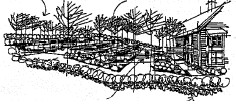
![]()
Natural
Grade![]()
Finished
Grade


ACCEPTABLE UNACCEPTABLE
Structure should be
designed to fit natural slopes.
Avoid significant
regrades by selecting
designs which fit natural topography.
Building Lighting:
Lighting may be used to accent a building but
shall not be used to denote a corporate or commercial image except on allowed signage. Lighting may be
directed to a building but should
generally not emanate from a building.
1. Avoid
back-lit panels and awnings. Translucent panels and awnings illuminated from behind are prohibited. This shall not
exclude soft light being emitted
from windows.
2. Keep light
source hidden from public view. Except for
decorator lights with frosted lenses or which use clear bulbs (e.g., candelabra bulbs) light
sources shall be concealed behind soffits, within recessed containers, behind shrubbery,
etc.
3. Avoid bright lighting on outdoor
surfaces of buildings. Outdoor building lighting is limited to low levels
except that more intense lighting is allowed at building entrances.
4.
Avoid colored lighting on buildings. Colored lighting is limited to temporary holiday lighting
only.
5. Apply utility lighting sparingly. Utility
light fixtures which have an
industrial or utilitarian appearance may be used for security lighting on buildings, but shall not be used in areas
of concentrated lighting (e.g., service station canopies) unless the fixtures are not seen from public
rights-of way.


6. Lighted accents, canopies, color bars,
stripes or areas. Buildings with lighted accent areas are using this
device to call attention to the business.
These areas should be used sparingly and are counted as part of the allowed
sign area.
Prominent Facades:
Prominent facades include all building facades
visible from waterways, arterials, and
activity centers, and also facades which face the road(s) providing primary access
to the building's site. Prominent facades may not be sterile wall planes void
of architectural interest. They shall
be detailed with added relief, shadow lines, and visual depth unless screened with landscaping.
1. Apply all design criteria to prominent facades. Prominent
facades, whether the front, side or rear of the building, are subject to full design review and shall comply
with all design criteria stated herein unless
full on-site screening by vegetation can be achieved within 3 years.
Building Scale and Mass:
One of the most prominent characteristics of a building's design is it's scale and massing. The scale of a building determines its size in relation to surrounding buildings; the massing of a building gives it interest and character. Modern building trends emphasize large-scale designs with no thought toward massing. This imbalance between size and visual character has resulted in visually obtrusive development which is out of character with surrounding structures of a smaller scale. Large retail boxes epitomize this trend and are considered incompatible with Homer's small town characteristics.
1. Avoid
long, low wall planes. Prominent facades shall have no wall plane
wider than 2.5 times the height of the wall
plane.
The
roof space defines the plane behind the smaller façade projection.
W H W H


![]()
![]()
![]()
![]()
UNACCEPTABLE UNACCEPTABLE
Height/Width
proportions apply with
or without gable
H W W H ![]()
![]()
![]()
![]()


ACCEPTABLE UNACCEPTABLE
2. Provide substantial shifts in walls
and roof surfaces. Wall and roof surfaces
shall be broken down into smaller
planes using substantial shifts in building
footprints that result in substantial shifts
in roof lines as follows:
a. Horizontal shift - No portion of a prominent facade may exceed 60 feet in length without a shift in the building
footprint measuring 1/10 of the facade
length. This shift may be broken down
into smaller shifts of at least 4 feet
each. Horizontal shifts, when required, shall be reflected by a shift or alteration in the roof design. To assure that footprint shifts are evenly
distributed across the building facade,
shifted wall planes shall have a
width proportion of between 1-to-1 and
3-to-1 the width of adjacent wall planes
on the same facade.
D=
At least 1/10 of A May
be no more 3B May
be no more than
3C C B A
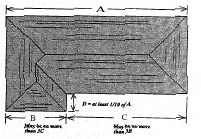
Horizontal shifts required if
"A" exceeds 60 feet in length
b. Vertical shift - No
single run of ridge, cornice, or
fascia (excluding eave overhang) shall exceed
60 feet without a minimum 4-foot transition in height.
80’
MAX 2.5
UNITS 1
UNIT 4’
MIN

3. Provide
visual terminus to tops of buildings. In order to avoid a truncated look at the top of the building,
all structures shall have a visual "cap”. This may include either a pitched roof or a flat roof. Pitched roofs shall have the appearance of true
hips and gables with a defined ridge where opposing roof planes meet. Roof designs must conform to one of the following options:
a. Lower pitched roofs with extended eaves - A lower pitch roof with a 4/12 pitch or less is allowed provided eaves extend at least 2 feet beyond
exterior building walls. A minimum of a
4/12 pitch is preferred.
b.
Steep pitch hip or gable roof
form - conforming to the following
roof pitch requirements:
Minimum pitch - 4/12 in all areas:
Maximum pitch - 12/12 in all areas.
Exceptions: Steeples, bell towers and other ancillary structures.
c. False pitch
roof with appearance of true hip or gable - Single
story and multiple story buildings may, have a flat roof with a false pitch if :
1. The
roof appears to be a true hip or gable
from all public vantage points, and
2. There
are extending wings on each corner of the
building which allow for a true hip or gable
to extend out from the false hip or gable (this will avoid a mansard roof appearance).
These roofs shall have a minimum 4/12 pitch, with
eaves extending at least 2’ beyond exterior walls.





4. Avoid
unusual or atypical roof forms on all structures. A-frame,
modified A-frame, curvilinear, domed,
and mansard style roofs and other unusual or atypical roof forms are discouraged. Multiple gables over a single-mass structure forming a
"saw-tooth" design are also
discouraged. These discouraged roof forms
may only be considered through Commission review.


Curvilinear Geodesic Dome
SAW-TOOTH MODIFIED
A-FRAME A-FRAME
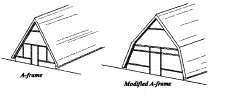
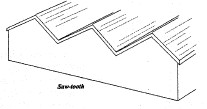
Examples of discouraged roof forms. Mansard roof forms are also discouraged.
5. Limit roof areas in the same plane. The total roof area
in a single plane shall not exceed 5000 square feet.
6.
Reflect mass and scale of adjacent structures. Structures shall reflect the mass and scale
of adjacent
structures. If a larger structure is built next to a
smaller structure, it must include projections in the facade which approximate the smaller structure's massing.

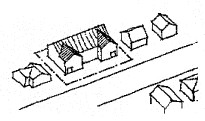
Parking Garages: The
following requirements are intended to soften the visual impacts of parking garages as seen from the street face.
1. Recess vehicle entries in main facade. Garage doors and open vehicle entries must be recessed at
least 6 feet from the front facade plane.
2. Screen parking garage facade. Parking garage facades which are visible from the street shall conform to one or a
combination of the following options:
a. A
landscaped screen. Screening may be trees, shrubs or wall clinging plantings on a trellis.
b. Store fronts. The parking garage may be faced with storefronts or display-windows.
c. Simulated
storefront. The openings of the garage may be designed to reflect or simulate the window pattern and material choice of the primary structure on the site. The door and window fenestration requirements on this page should
be used as a guide.
3. Acquire Commission approval for all parking
garages over 1 story or which
enclose 20 cars or more. In making
its determination of compliance, the Commission shall consider the design criteria under 1 & 2 directly above, and may also determine how much
screening or architectural
embellishment is required based upon projected
lines of sight from the pedestrian's perspective.
Window and Door Fenestration:
The
primary purpose of windows to the interior portion of a building is to let in
light and air. To the outside of a building,
windows can make an architectural statement. The challenge to the architect is to make sure that both objectives are met.
Windows placed primarily to serve interior functions may appear to have been haphazardly placed on the
outside of the building or may be completely lacking due to a reliance on
mechanical systems for light and air. This shall be avoided. Windows can and should serve as a pleasing focal point in a
building's design or emphasize a shift in a wall or roof plane. Windows should relate to, align with, or complement exterior design features of the building.
1. Maintain balance in the placement of
windows. To the extent possible, multiple windows on a
single wall plane should be regularly spaced and aligned with other windows and doors on the same wall plane. Single or grouped windows on a wall plane should relate to other architectural features such as roof
forms, doors, or facade projections.
The scattered and haphazard arrangement of windows on this facade result in poor balance in the overall building design.

AVOID

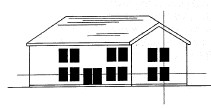
PREFERRED
2. Conform to solid/void ratio requirements. Generally, windows and
doors shall constitute a minimum of
25 - 30 percent of prominent facade wall planes. In situations where
this is not practical, emphasis shall
be placed on the building's form and texture.
The following type of options may, in limited applications, be acceptable alternatives:
i.
Vertical and/or
horizontal shifts in the facade
combined with roof forms which accentuate
facade variations.
ii.
Variations in
texture.
iii.
Variations in exterior
lighting.
iv.
Vegetative
screening.
3. Reflective
glass is discouraged. The use of reflective glass shall generally not be allowed but may be considered by the Commission in limited
applications.
Siding and Trim:
Traditional building materials such as brick, stone
or wood reflect human handicraft and
provide texture to building
exteriors. Materials for new construction and remodeling should convey similar visual qualities.
1. Use
materials which simulate quality traditional building materials. Finish materials must individually be characterized by texture, grain, or color variation. Individual
components shall be small enough so that their collective application provides interest and
texture to building facades and
reflects human handicraft. Non-traditional materials shall
be used sparingly unless they can be shown to have similar visual qualities of traditional materials or
contribute to overall design character.
Discouraged
siding materials: The following materials must receive Commission
approval. Creatively applied small
sections of these materials may add architectural interest, but their use is
discouraged as the predominant siding material.
i.
Corrugated or ribbed
metal panels
ii.
Sheet siding (e.g.,
T 1 -11)
iii.
Concrete panels
iv.
Tile
v.
Smooth Concrete
Blocks
vi.
Vertically ribbed or
vertically grooved material
vii.
Smooth or Flat metal
panels
Miscellaneous Architectural
Devices:
Building design should be executed in a straightforward
manner. Tack-on devices may not be used to mitigate poor design or to promote a
particular theme. If a particular style or theme is desired, it should be reflected in the building's form and
general detailing.
1. Architecturally integrated artwork is
encouraged. Artisans are encouraged to create art and
sculpture which compliment building architecture and the community.
2. Avoid
Architectural Gimmicks and fads. Types of gimmickry
to be avoided include, but are not limited to, the following:
a. Tenant-specific motifs - Detailing or color used to promote a particular theme or to identify a specific tenant should be avoided. Signage
shall be used for this purpose.
b. Neon
Outlining - Architectural
features shall not be outlined in
neon, linear lights, or tube-type lights. This includes exposed and concealed
lights.
c. Back-lit
Awnings - Awnings may not be backlit or otherwise illuminated from behind
unless the awning fabric is
completely opaque so that it blacks
out all light.
d. Non-functional
Awnings - Awnings shall be
limited to traditional locations over
windows walkways, and entrances or over other architectural features where weather
protection is needed. Awnings must
be applied to walls or posts and may not be applied to existing projections over walkways or windows.

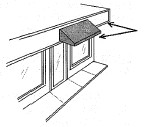
3. Maintain consistency in awning design. Multiple
awning designs are not permitted on a
single building.
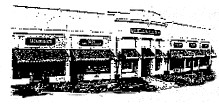
These awnings are consistent in
design. Limiting their location to
individual doors and windows assures
that they do not overpower the building facade.
4. Avoid awnings which obscure or dominate the building
design. Awnings, canopies and marquees may not obscure
architectural details of the facade
and may not be the prominent design
element of the building. They must appear as a secondary and complimentary element of the building design.


Roofing Materials:
Views
of roofs from the ground and from higher elevations play an important role in
the architecture of the city. Roofing materials shall be selected according to the
following criteria.
1. Use roof materials which provide texture and shadow lines.
2. Avoid
bright-colored, reflective or unsightly roofing materials. The
following roofing materials are discouraged
and may only be considered by the Commission in unusual cases:
a. Gravel.
b. Untreated aluminum or metal (copper may be used).
c. Reflective materials (including aluminized
hot-mopped roofs, white or light gray metals which have a metallic
appearance in bright sun).
d. Brightly
colored, highly visible roofing materials.
e.
Red bar-tiles
common to Spanish architecture
f.
Urethane foam,
painted and unpainted
Color:
Color is an important and dominant aspect of
building design. When selecting colors,
consider carefully the different materials and levels of detail that color can emphasize. The field or base color is one of the most dominating features of the building; trim colors
are used on the building's secondary
features, while accent colors can emphasize the finer, more characteristic
elements of the building's design. Typically, no more than three
colors should be used on one building, but additional colors may be considered if they are a close shade of one of
the other three colors.
1. Keep field colors subdued. Field
or base colors (the main color of the
exterior walls) are limited to the more subtle earth tone colors. White, soft sands, grays, light pastels, and deep rich
clay colors are appropriate field colors.
2. Limit bold or bright trim colors. Trim
colors (fascia, cornice, window & door trim, kick panels, etc) may contrast or compliment the field color. Using a
lighter or darker shade
of the field color is always an appropriate trim color as is white.
3. Finer
details may be accented with brighter colors. Accent colors can
generally be brighter than field or trim
colors. Accent colors should be used
with restraint. Appropriate areas for
accent colors are those details that
might otherwise go unnoticed such as moldings or molding indentations, medallions, and shadow lines of window and door frames. Doors are also an appropriate location for accent colors.
Hierarchy in Building Design:
Visual
interest in the urban-scape can be achieved through a hierarchical approach to
design. For example, strategically
located structures, architectural elements or site amenities designed as focal
points create a visual
"draw" and suggest a point of activity. These serve also as a reference
point for all subordinate
structures. This concept is particularly applicable to large parcels with
multiple structures. Multiple
"carbon-copy" buildings provide
no visual hub and shall be avoided.
1. Design primary structure as a focal point.
Primary structures are those which serve as a visual draw to a site. Primary
structures shall be included on all commercial sites with more than one building, on commercial sites with a one or more multiple tenant buildings. Primary structures shall be
designed as follows:
a. Primary structures shall be the focal point of development.
b. To
assure a more stately appearance,
primary structures are encouraged to have two levels and may include either commercial or residential space on the second level. The
second level may be within habitable
roof space. This is encouraged to provide
interest to the building's roof form.

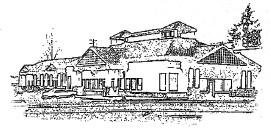
c. Primary
structures shall include a prominent entrance. The entrance may be defined by a
projecting porch or portico or a clearly defined doorway designed
as a focal point, in the facade design.


2. Include area for outdoor
leisure for Primary Structure.
Primary structures shall incorporate
either a prominent portico or plaza
which is visible to the public and
useable to customers or clients. Its size shall be at least 10% of the main level interior floor area. It must be incorporated into the building
design. (This may or may not be the prominent
entrance described above and may be
applied toward requirement for a
commercial common area described on
page 20).
3. Integrate secondary structures as support buildings. Secondary structures may be much simpler in design and still provide interest to the site plan or streetscape. Architectural interest is of less importance with secondary structures but they must meet all other design criteria for commercial buildings.
.
4. Incorporate
multiple tenant spaces into hierarchy of building design. Required
facade and height variation will provide
some degree of hierarchy in a building's
design. Where possible, facade and height variation should reflect the location of individual tenant spaces.
5. Provide
consistent architectural interest to all prominent facades. All building facades prominently visible to public rights-of-way shall meet the following facade requirements.
a. Prominent
facades shall not be blank walls.
b. Prominent
facades shall reflect the same design
and detailing which typify the building's
front including roof design, window proportion,
facade variation, and building materials.
c. Prominent facades may not be
concealed behind high walls or privacy fences. Lower fences and walls
not exceeding 3 feet in height are
acceptable.
6. Provide a common architectural treatment to all buildings on the same parcel or which are part of the same development. In order to provide an overall pleasing development, all buildings shall employ a complimentary architectural style and finish.
![]()
SITE DESIGN
Applicable Areas and Uses:
Within Areas Zoned
Central Business District:
All
non-residential uses and uses with more than 12 residential units.
ON-SITE WALKWAYS
Primary
Walkways:
Primary walkways are intended to
link a building's main entrance to the
public right-of-way and to facilitate
and enhance the pedestrian environment.
1. Link commercial buildings and the public right-of-way with primary walkways. Commercial
buildings must be served by primary walkways which directly link the building's main entrance to the
public right-of-way.
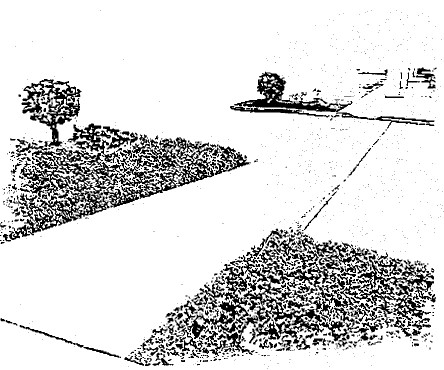
2. Assure that primary walkway
width is proportionate to scale of project. Primary walkways must be a minimum
of 5 feet on small-scale projects;
wider walkways may be required for larger scaled projects.
3.
Differentiate walkway surface. Walkways must be visually distinct from
parking lot and driveway surfaces and may include textured or
colored materials. Paint or striping
will not suffice to meet this
requirement. Walkways must be
functionally separate from parking lots and driveways except where they cross driveways.
4. Accent walkway with significant landscaping. One side of the primary walkway must be landscaped except where it crosses a driveway. The width of the landscaping shall be sufficient to maintain a proper planting environment. Planting strips must have an average width of 3 feet. Wider planting strips may be required for larger scaled projects.
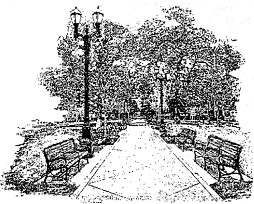
5. Accent walkway with lighting and seating areas. Walkways longer than 100 feet must include lighting and seating as per lighting standards on page 30 and outdoor furniture standards on page 32.
6. Identify
historic events or structures. Plaques, signs
or art work with applicable information about historic events or structures
associated with the site are
encouraged.
Secondary
Walkways:
All commercial and
multi-family parcels shall include an on-site pedestrian system that provides pedestrian movement between buildings without
depending on parking lots for this purpose.
1. Link each
building with walkways. All buildings designed for residential
occupancy or business access shall
be linked to each other by a secondary walkway system. Public sidewalks may be considered part of the walkway system if they provide convenient movement between structures.
2. Assure adequate
walkway width. Secondary walkways must be wide enough for their intended purpose.
3.
Differentiate walkway surface. Walkways must be visually distinct from the parking lot and driveway surfaces. Where walkways are flush with driveways
or parking lot surfaces, textured or colored materials can provide visual distinction. Paint or striping will not suffice to meet this requirement.
4. Avoid walkways which cross parking
stalls. Walkways
may not be used for parking stalls. However, the ramp or loading area of a
handicap-stall may be part of the
walkway, subject to ADA conformance.
Secondary
walkways connect each
building and are distinct from
parking lot surfaces
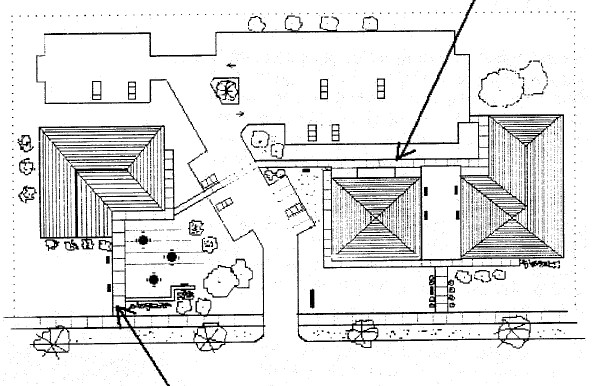
Primary
walkway connects building’s main entrance with the public sidewalk. Notice how the outdoor plaza provides a visual
focus to the site while enhancing the pedestrian environment.
OUTDOOR COMMON AREAS
A common area is a designed outdoor space which encourages outdoor activities and leisure in outdoor spaces associated with commercial development. Required common areas must be provided on-site, but may be enlarged and extended into city rights-of-way to connect with the sidewalk, subject to City of Homer approval.
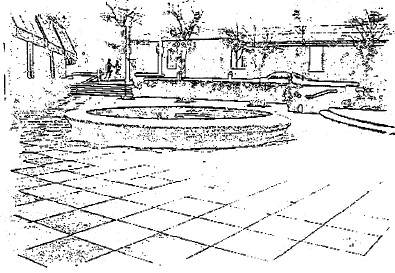
1. Provide common area of a size proportionate to development. Commercial development greater than 5000 square feet in floor area shall include common areas equal to 5% of the gross floor area of the building to which they apply, excluding garages, warehouses, and similar support structures.
2. Choose type of common area best suited to
development. Common areas must include trash receptacles and casual seating and/or tables.
Common areas must be one of (or a
combination of) the following:
a. Balcony. terrace or covered colonnade - providing a minimum walking width of 8 feet and which also incorporates seating areas.
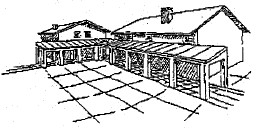
b. Plaza - with colored or textured pavement surface, e.g.,
brick, stone, exposed aggregate concrete
or colored and textured concrete. To provide pattern and enhance the texture of the
pavement, concrete surfaces shall be scored or otherwise divided into smaller sections.
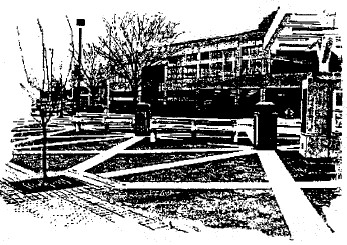
c. Pocket park - developed between or in front of buildings which include landscaped areas of grass, trees, shrubbery and flowers, combined with limited paths and pavement areas for casual tables and/or seats.
d. Scenic View
Area - consistent these design standards. Viewing platforms
intended for public access shall be identified with signage located at the edge of the public right-of-way.
e. Off site common areas - For
structures with less than 10,000
square feet of floor area, any of the above
common areas which are within 250 feet of
the subject site and are at least as
large as the required common area for the subject site meet common area requirements and do not have to be repeated. This does not imply that the off site common area must be accessible for the subject site's use. It merely develops an
appropriate density for outdoor common
areas in a given district.
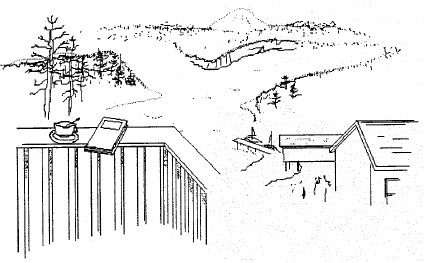
3. Locate common areas in view
corridors. Where view corridors occur on a site, common areas shall
be located within the view corridor. Use care in the selection of
landscape plantings so as to preserve views.
4. Provide direct access to common areas
with pedestrian walkways. Common areas (or outdoor stairs leading to common areas) shall be easily accessible to customers from the public right-of-way by either primary or secondary
walkways.
5. Provide outdoor seating where people
want to sit. Pedestrian seating is
encouraged in locations which allow enjoyment of sun and protection from
wind and rain. Locate seating so that users
can observe the activities of the
street or enjoy a scenic view.
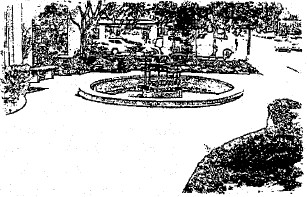
6. Consider allowed activities in common areas. To assure full use and benefit of common areas to
the property owner, the following
activities are allowed in common areas:


b. Temporary
art displays - allowed in
private common areas, subject to owner approval.
c. Outdoor sales - (e.g., farmers
market) allowed one day per week.
d.
Outdoor dining -- Common areas used for outdoor dining may add up to
one seat per 20 square feet of common area without any additional parking being
required. Such seating may not impede
pedestrian flow.
COMMERCIAL STREETSCAPE
To enhance the visual quality and the pedestrian environment of commercial streets and activity centers, an increased emphasis should be placed on landscaping, pedestrian walkways and architecture. Parking lots and service areas should be visually diminished by keeping them to the side or rear of the buildings.
1. Locate structure
near front setback line. At least 50 percent of the primary structure's front facade shall be placed
near the front setback line. The remaining portion of the building may be stepped back to accommodate common areas or parking. However, no more than 50 percent of required parking may be located in
front of a building (see parking
standards on pg. 28).
2. Orient
service and delivery areas away from the
street. Where possible, service and delivery
bays, including warehouses and
mini-storage units, may not be oriented to the street.
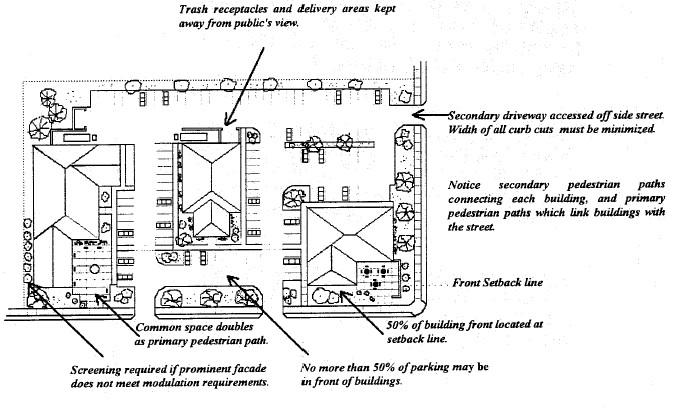
3. Limit the number of curb cuts. To maximize landscaping at the street face, curb cuts for driveways shall be limited to one cut per parcel frontage or one cut per 200 feet of parcel frontage, subject to Public Works driveway separation requirements. An additional cut is allowed if the driveway is one-way. Where available, side streets or alleys should be used for additional access needs.
4. Limit width of driveways to 15, 24 or 34 feet. To further maximize landscaping at the street face, one lane driveways may be no wider than 15 feet, two lane driveways may be no wider than 24 feet and three lane driveways are limited to 34 feet except that necessary flaring of the driveway may occur between the inner edge of the sidewalk and the gutter.
5. Link
dissimilar buildings with common site amenities. Visual
continuity can be achieved between
dissimilar buildings by emphasizing common elements of site design. (e.g., landscaping,
screening, furnishings, light standards,
decorative paving materials). Similar
colors of structures can also provide
visual continuity to the streetscape.
6. Provide
covering over walkways where appropriate. Encourage pedestrian
use of walkways by providing canopies,
marquees and awnings on building
fronts which abut a sidewalk.
7. Place no more than 50% of required parking
in front of buildings.
Where practical, no more than 50% of
required parking may be located in front
of the building. In this context, the
front shall be the building side facing the street providing primary access
to a site.
8. Avoid parking in front of building
entrance. Parking spaces in front of
the main building entrance interfere
with entrance visibility and access. These shall be avoided.
9. Choose awning designs appropriate to building style. Awnings,
canopies and marquees may not obscure architectural details of the
facade.
LANDSCAPING
& SCREENING
Formal
landscaping provides a pleasing transition between the natural setting and the
built environment and between adjacent built environments. Landscaping may not be considered adequate
compensation for poor site or building design; it shall be used to enhance new
development (regardless of how
attractive the buildings on a site may be) and to soften the visual impacts of
such urban necessities as parking
lots and mechanical equipment. Natural vegetation, together with existing views of the water and land views is an
integral part of the Homer setting and should be preserved on both developed and vacant parcels. Views through or
framed by natural vegetation may be
achieved while retaining the existing vegetation which characterizes Kachemak
Bay.
1. Control vegetation to preserve existing significant views. The following standards promote retention of existing views and apply to both commercial and residential properties:
a. Selective
thinning - Larger tree stands
which, over time, have closed off
significant views may be selectively thinned. Limit thinning to maintain a balance of timber and continuous
canopy.

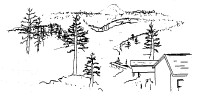
b. Trees within view -
Allow trees to be a part of the view.
Limited numbers of trees should not be
considered an obstruction to a view.
c. Trimming trees. When
trimming or limbing up trees to
preserve views, maintain a healthy balance between the crown and trunk
of the trees.
d. Tree Topping. Avoid topping or trimming which alters the natural symmetry of a tree unless necessary for safety reasons or as emergency situations dictate.
2. Avoid removing significant vegetation. Complete removal
of significant vegetation to create new views where views do not currently exist, or to
create panoramic views out of existing limited views is not permitted.
3. Provide adequate room for retained vegetation. Identify how retained trees will be protected both during and after construction.
a. Location of structures. Buildings, retaining walls, utilities and paved surfaces must be far enough away from retained trees to allow room for construction activities (including grading and excavation) and to assure a proper growth environment after construction.


b. Area of construction. In no case shall construction activities take place within the drip line of the tree (root zone) without extra
precautions.
c. Tree
well. Provide a tree well or
other form of protection where the
surrounding grade must be raised.
4. Protect
existing trees during construction. Significant vegetation to be retained must be protected
during construction by installation of an effective system. The system must be approved by the Public Works Department, and must be
in place during construction.
Construction Limit 
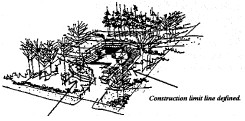
5. Replace lost trees which were intended to be
retained. Any tree proposed or
required to be retained and which is
subsequently lost or destroyed must
be replaced with at least three 6-foot trees of an appropriate species.
6. Choose plantings which are compatible with existing vegetation. Plantings must be of a type which will thrive amid existing vegetation without killing or overtaking it. Avoid mixing incompatible plants which require different planting environments or micro-climates. Avoid haphazard mixture of textures, colors and plant types.
7. Locate vegetation to preserve significant views. Views and vistas from public rights-of-way shall be considered when determining placement of vegetation. While it is not the intent to avoid all trees in the foreground of a view, consideration should be given to the expected height of trees and how they might be located to "frame" the view.
8. Retain the
natural symmetry of trees. Trimming
of trees shall be done in a manner
that preserves the tree's natural symmetry. Topping shall be avoided unless required for health/safety
reasons. Limbing-up may be appropriate if sufficient crown is retained
to preserve the tree's health.
9. Use shrubs or vines on blank walls. Blank walls shall
include a narrow planting area with shrubs
or vines giving coverage to the wall.


10. Conform
to all other landscape criteria in the Homer City Code.
Vacant Parcels in All Zones:
Limit Clearing to no more than
50% of significant vegetation
and retain vegetation in all required buffers and setbacks. Clearing limitations apply to all
vacant parcels with no approved Development Activity Plan, Storm
Water Plan, or Zoning permit for development.
FENCES
Fences
are useful for defining space, providing security, and visually enhancing
outdoor settings. The degree that these qualities are considered depends
on the intended purpose of the fence and where it will be located. The design of the fence
may not be important if the fence is strictly for security reasons, (e.g., a mini-storage
yard), but if the fence is visible to the public right-of-way, design takes on added significance.

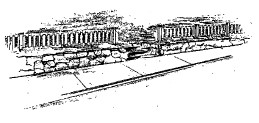
1. Choose fence materials carefully. Fences
shall be constructed of wood, wrought
iron, brick, stone or cinder block. Smooth-faced cinder block must have a veneer
finish on the side visible to the public's view. In commercial areas or recreation centers in residential
areas, coated chain link attached to wood posts
and rails is permitted. Other materials which have the general appearance and visual quality of approved fence materials may be approved by the Planning
Director, however, the use of plywood or composition
sheeting as a fence material is not permitted.

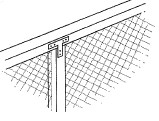
2. Limit chain link to non-visible areas. In areas not visible from any City right-of-way, waterway, or designated public space, standard chain link
fencing including steel posts and rails is permitted.
3. Limit height of fences. Unless otherwise
required by Homer City Code, fences are
limited to a height of 3 feet along arterial
frontages and in the front yard (4 feet for open rail fences) and 6 feet in the rear yard, provided that clear vision is retained for adjacent driveways and intersections (see sight triangle provisions in
Homer City Code).

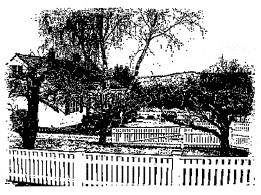
PARKING
Parking
lots and parking structures may not visually dominate Homer's urban setting.
Parking facilities shall be designed
with increased emphasis on pedestrian ways and human enclosure. The following requirements are intended to mitigate
the visual impacts of parking by screening parking lots from public rights-of-way and by making
parking garages a secondary element in building designs.
Parking Lots:
1. Use
landscaping to screen parking lots and
service areas. Parking lots and other expansive pavement areas
shall include a wall, solid hedge or landscape berm at least 3 feet high (conforming to clear vision requirements at driveway
entrance) parallel to the right-of-way
to soften the visual impact of the lot from
the street.
2. Limit
the number of curb cuts. To maximize landscaping at the street face, curb cuts for driveways shall be limited to one cut per parcel frontage or one cut per 200 feet of parcel frontage, subject to Public Works
Standards driveway separation requirements. An additional cut is allowed if the driveway is one-way. Where
available, side streets or alleys should be used
for additional access needs.
3. Limit
width of driveways. To further
maximize landscaping at the street face, one lane driveways may be no wider than 15 feet, two lane driveways may be no wider than 24-feet
and three lane driveways are limited
to 34 feet except that necessary flaring
of the driveway may occur between the inner edge of the sidewalk and the gutter.
4. Screen
or enhance parking lots visible from the Sterling Highway, Lake Street, Heath
Street, Main Street, or Pioneer Avenue. Parking lots designed for
more than 16 cars and which are
visible from these Rights-of-way shall either be partially screened or meet the following landscape
standards:
(a) Provide
tree areas throughout parking lot. Parking lots must include areas for trees.
(b) Provide
color and texture to distant parking stalls. Parking surfaces which are more than 200 feet from the building they apply to and which
are visible from arterials must be surfaced
with colored and textured paving or
other devices such as grass pavers.
5. Incorporate
pedestrian ways into parking-
lot. Pedestrian ways, including walkways and crosswalks, shall conform to the on-site walkway requirements
on page 18.
6. Limit
parking in front of buildings. No more than
50 percent required parking may be
located in front of the building. In this
context, the front shall be the building
side facing the street providing primary access to a site.
7. Provide trees within larger parking lots. Parking lots designed for 24 or more vehicles must include tree areas, which shall be spaced a maximum of 100 feet apart, among parking rows.
8. Avoid parking in front of building
entrance. Parking spaces in front of the main building
entrance interfere with entrance
visibility and access. These shall be
avoided.
9. Handicap
parking. Provide handicap parking
space in conformance with State of Alaska and Federal regulations.
Parking Garages:
1. Recess
vehicle entries in main facade. Garage
doors and open vehicle entries must be
recessed at least 6 feet from the
front facade plane.
2. Screen parking garage facade. The
front parking garage facade which is
visible from the street shall conform
to one or a combination of the following options:
a. A landscaped
screen. Screening may be trees, shrubs
or wall clinging plantings on a trellis.
b. Store
fronts. The parking garage may be faced with storefronts or display windows.
c. Simulated
store front. The openings of the garage may be designed to reflect or simulate the window pattern and
material choice of the primary structure on
the site.
3. Receive Commission approval for parking garages
over one story or which enclose 20 or more
vehicles.
OUTDOOR LIGHTING
Applicable Area
Within Areas Zoned CBD, RR, UR, RO,
and the portion of GC1 lying south of Beluga Lake:
All uses
The primary purpose of outdoor lighting is to
improve visibility and safety within
outdoor spaces. However, light can
also enhance a setting if the intensity and source of the light corresponds to the visual character of the
surroundings.
1. Keep
light source hidden from public view. Except for streetlights
installed in rights-of-way, all light sources, whether on public or private property,
shall be hidden or conform to light standards specified herein. Light
sources (e.g., light bulbs) shall not be visible except on approved decorator lights. Sources of high intensity light, whether behind a
lens or not, shall not be visible to
the public.



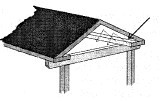
2. Use downward directional
lighting. All lights
more than 7 feet above the ground shall be downward directional lighting.
ACCEPTABLE UNACCEPTABLE
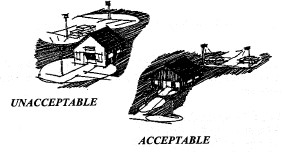
3. Avoid
lighting large areas with a single source. Large areas may be lit
with a number of low intensity sources
close to the area requiring illumination; illumination of a large area with a remote single source of light shall be avoided.
4. Avoid
excessive light throw. Lighting shall not be cast beyond the premises and shall be
limited to illumination of surfaces
intended for pedestrians or vehicles. Illumination of landscaped areas shall be
avoided unless lighting is part
of the landscape design or the area is
intended for recreational use.
5. Choose approved outdoor light designs. The following lighting types are approved:
a. "Shoe
box" style pole lamps to be
approved as appropriate for district (downward directional).
b. Ornamental
pole lamps - to be approved as
appropriate in color and style for district.
c. Bollard lights - to be approved as appropriate in color and style for district.
6. Avoid
light fixture designs which have an industrial appearance. Designs
of an industrial or utility appearance
shall be avoided on all fixtures visible to the public, e.g., mercury vapor lights, cobra lights, etc.
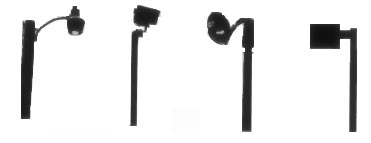
NO! NO! NO!
YES!
Except for the "shoe-box" style
light on the right (which is downward directional), these other lights
are too industrial in their appearance and are designed
for illuminating large areas with a single light source.
OUTDOOR FURNISHINGS
(Encouraged in Central Business District, Marine Zoning Areas, and adjacent to Ocean Drive.)
Outdoor
furnishings are as important to the visual quality of the City as indoor
furnishings are to a room. The
choice of furnishings determine how casual or formal a setting may be and
reveal a great deal about the
preferences of the people the setting is designed to serve. Outdoor furnishings
in public and quasi-public spaces
contribute to a community image. The following requirements will assure consistency in outdoor furnishing design in
public rights-of-way and are recommended guidelines for private common areas:
1. Use City approved furniture designs on public rights-of-way. All
furniture on rights-of-way shall be
approved by the Public Works Department and the Planning Department as to its
type, style, manufacturer, series,
and color. Outdoor furnishing shall
be of a commercial grade designed for heavy
public use.
![]()
CONNECTIONS
INTENT:
The intent of connections standards is
to extend design consideration beyond individual parcels and emphasize
(a) visual links between districts, (b) functional links between parcels, (c)
transitions between dissimilar uses and (d) right-of-way and common area improvements which will create a cohesive community
image.
This section will be
developed further at a later date.
Glossary
Access
Road The
road providing direct access to a parcel or project.
Activity Center Centers of concentrated activity where multiple uses
are clustered in such a manner as to be mutually supportive of one another and to promote pedestrian movement.
Arch A structural device, especially
of masonry, forming the curved, pointed, or flat upper
edge of an opening or a support, as in a bridge
or doorway.
Balcony A
platform projecting from the wall of a building and surrounding by a railing, balustrade,
or parapet.
Baluster An
upright support of a handrail or a guardrail.
Balustrade
A row of balusters topped by a rail.
Building Footprint The outer perimeter of a building
excluding eave overhangs, and other cantilevered portions
of the building projecting
no more
than 18 inches and no wider than 10 feet.
Building Front Usually the building side where architectural detailing is emphasized most, and is typically the side where
the primary entrance is located.
Bay Window A
compartment projecting outward from the wall of a building and containing
a window or windows.
Bracket A supporting member for a projecting
architectural element or shelf, sometimes in the shape of an inverted L and sometimes
as a solid piece of triangular truss.
Colonnade A series
of columns set the same distance apart to support a roof.
Column A vertical
shaft or pillar that supports, or appears to support, a load.
Common Area An
on-site outdoor space designed for outdoor activities and leisure for customers
of commercial development.
Corbel A projection of building, sometimes to support a load and sometimes for decorative
effect. Corbels are often found in masonry detailing where
rows of bricks project progressively forward, with
the forward-most
projection occurring at the top of the
corbel.
Cornice
A horizontal molded projection that crowns or completes
a wall or building.
Dormer A window set vertically in a
small gable
projecting from a sloping roof, or the gable holding the dormer.
Eaves The
projecting overhang at the lower borders of a roof.
Elevation A scaled drawing
of the side, front or rear of a particular structure without any allowance
for the laws of perspective.
Facade The
front or principal face of a building, any side of a building that faces a street
or other open space.
Fenestration The arrangement and design of windows and doors in a
building.
Fascia A
flat board with a vertical face that forms the trim along the edge of a flat
roof, or along the eaves of a pitched roof
The rain gutter is often mounted to
it.
Gable The portion, above eaves level,
of an end wall of a building with a pitched or gambrel
roof In the case of pitched roof this takes the form of a triangle.
Gambrel
Roof A gable roof design, but with two pitches on each side of the ridge, the lower slope having the steeper pitch.
Hierarchy Architecturally, hierarchy refers to the visual order of building design. Hierarchy is achieved when one building is visually more prominent or stately than surrounding
buildings, or in the case of a single
building, hierarchy is achieved when a building
includes both prominent and subordinate design
elements (e.g., small roof forms cascading down onto progressively larger roof forms).
Hip One of the sloped faces of a
hipped roof, usually referring to the narrow end.
Hipped Roof A roof
with pitched or sloped roof planes on all sides, usually of the same pitch.
Knee
brace Similar to a bracket and often found
below cave overhangs either as a support brace below the eaves or
for decorative purposes.
Landmark
structure A structure which is conspicuous
or visually distinct from surrounding
structures, usually because of increased height combined with a more stately form of
architecture.
Marquee A roof-like
structure, made of solid materials, projecting over an entrance to a building and connected to the
wall with no columnar support. The front of
the marquee is often hung from
chains or rods extending out from the face of the building.
Mass/massing The
physical bulk or volume of a building. In architectural
terms, a single mass building is a single geometric form such as
rectangle or square, and may include a simple roof form with no variation in the roof line. Massing refers to variation in the mass and may involve multiple masses joined together.
Muntins The
glazing bars which hold smaller panes of glass within the sash of a window. These are
commonly referred to as window grids.
(See window parts definition).
Neck-down
A section of street where the street pavement width
is reduced to accommodate
a sidewalk which flares out beyond the
parking lane of the street. The purpose
of a neck-down is to reduce the street pavement width where
pedestrians cross.
Palladian
Window A tripartite window opening with a large arched
central light and, flanking rectangular side lights.
Parapet A low
protective wall (usually solid) along the edge of a roof or balcony.
Parkway A
visually distinct roadway which
connects activity
centers and serves as a gateway into a defined area of the city.
Pediment
A wide low-pitched
gable surmounting the facade of a building in
a classical style; also, any similar
triangular crowning elements used
over doors, windows, and niches.
Perspective
Drawing A three-dimensional representation
of a building or site providing the appearance of depth as seen by normal binocular
vision.
Pitch The
angle of a roof pitch,
usually expressed as a ratio of units of vertical distance to 12 units of horizontal distance. For example,
8/12 means 8 units of vertical rise to every 12 units of horizontal run.
Plan
Drawing A drawing representing a downward view of an object or building, or a horizontal section of it. A floor plan drawing of a building
will show the arrangement of the walls,
partitions, rooms, doors and windows.
Porch A
covered entrance to a building, either open or up to 1/3
enclosed.
Portico A
walkway or porch with a roof supported by columns, often at the entrance of a building
Primary
structure A structure designed to serve as a focal point to the site and to suggest a point of activity. On
parcels with more than one structure, it is the primary or anchor tenant building. Structures joined to a primary
structure with minor connections such as
breezeways or low walls shall be considered separate structures.
Primary
Walkway The main pedestrian walkway
which connects a building's entrance to the public right-of-way (see secondary walkway
definition).
Prominent
Facade All building
facades visible from waterways, designated parkways, enhancement
corridors and activity centers, and facades which face the
road(s) providing primary access to the building's site. Facades which will not be visible
after a three year period shall not be considered prominent.
Prominent
Parcel Parcels which are prominently
visible either because of their corner location or because, when viewed from a distance on the road
providing access to the parcel, they serve
as a view terminus.
Quoin (koin)
Dressed stones or bricks at the corners of a building, laid so that
their faces are
alternately large and small. Originally used to add strength to the masonry wall, later
used decoratively.
Rehabilitation The act
or process of returning a property to a state of utility through
repair or alteration which makes possible an efficient contemporary use while preserving those portions or features of the property which are significant to its historical, architectural, and cultural value.
Renovation The act
or process of returning a property to a state of
utility through repair or alteration which makes possible
a contemporary use.
Restoration The act
or process of accurately recovering the form and details of a property and its
setting as it appeared at a particular period of time by means
of the removal of later work or by
the replacement of missing earlier
work.
Saltbox A gable-roofed
house in which the rear slope is longer than the front, often with a
reduced pitch on the lower portion of the rear slope.
Sash A frame
in which the panes of a window are set. (See window
parts definition).
Secondary
Walkway Pedestrian walkways which
provide for pedestrian movement between buildings without
depending on parking lots or landscape areas for this purpose.
Siding Material
used for the finished wall surface of a building.
Significant
vegetation Healthy trees having a trunk
diameter of at least 6 inches and natural shrubs or bushes with a
height of at least
4 feet.
Significant
views Territorial
view sheds
as seen (in most cases) from strategic locations in the
city's right-of-way
Sill The
horizontal supporting member at the base of a window.
Spandrell The
triangular space between the
left or right exterior curve of an arch and
the rectangular framework surrounding it. Also, the
space between two arches and a horizontal
molding or
cornice above them.
Spandrell
Glass Glass,
often reflective, designed to be used as building siding.
Stately In
terms of structures, a design having lofty dignity due to increased emphasis on
height, vertical proportions, hierarchy in roof
design, and added emphasis on trim details
in prominent locations (e.g., the front entry).
Story The
horizontal division between a floor and an adjacent ceiling or floor.
Visual terminus The
point at which a view terminates, e.g., a
distant object which the eye
is
drawn to in a view. Visual termination may also occur in building
design when architectural details provide a statement of completion,
as in the peak of a pitched roof or a projecting cornice which
provides a visual cap to a building.
Transit Stop An
area designated as a waiting area for riders of mass transit.
Window
Parts The moving units of a window
are known as Sashes and move within the
fixed Frame. The Sash may
consist of one large Pane of glass or may be subdivided
into smaller panes by thin members called Muntins or Glazing Bars. Sometimes
in nineteenth century houses windows are arranged side by side
and divided by heavy vertical wood members called Mullions.